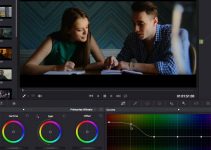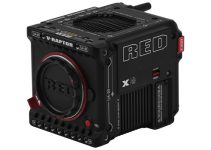When you’re a content creator looking for a camera that can do it all, what you want is something you can take anywhere; Something small and lightweight with good low-light capabilities. You want something you can mount along side your computer rig, but something you can also chuck into your backpack.
If you’re a streaming live content, you need something with a clean HDMI output. For vlogging, a wide lens and a fully rotatable on-camera monitor so you can see yourself in the frame. And with everything, a rock-solid autofocus system so you can concentrate on the content you’re making and not how you’re making it.
That sounds like a tall order, and sometimes looking through and comparing the forever updating and upgrading cameras that are offered by the big manufacturers can seem like a daunting task.
Fortunately, Alpha Gaming has broken down the features on three popular, budget cameras to help you find the one that is best for you.
The Sony a5100, the Canon M200, and the Panasonic Lumix G7 are a first-class trio of budget cameras that offer the ideal quartet of features for content creators. Each will work for live streaming, filming, vlogging, and still photography. What’s more, they won’t break the bank with a price point well below $1,000!
But which is truly the best of the best budget cameras? Let’s take an in-depth look at their features and limitations.
Canon M200 (B&H, Amazon)
- 26.6mm APS-C Crop Sensor
- 1080 60fps
- 4K 24fps (cropped)
- 720p 120fps
- 15-45mm Lens
- $499
Released in October of 2019, the Canon M200 is the newest of the bunch. It features a 26.8mm APS-C sensor that is capable of shooting 1080p at 60fps, 4K at 24fps (cropped), and 120fps at 720p. The build quality is superb. And, the screen is able to flip over the camera just enough to allow you to monitor yourself for vlogging.
Like all Canon cameras, the specs of the M200 seem to be a little lackluster for something that was released so recently. 4K capabilities are great, but the additional crop on the sensor make filming almost impossible for vlogging with the stock 15-45mm lens.
But this camera incorporates an EOS-M interchangeable lens mount that can accept a range of fantastic EF-M lenses, and can easily be adapted for EF lenses. For an added boost, you can even use a focal reducer to give your stills and video a Full Frame look, and knock some of that crop factor off when filming in 4K.
Panasonic Lumix G7 (B&H, Amazon)
- 21.6mm Micro Four Thirds Sensor
- 1080p 60FPS
- 4K 30fps
- 14-42mm Lens
- Hot Shoe Mounting
- Microphone Input
- $499
Released in May of 2015 the specs of this camera look good on paper. It uses a 21.6mm Live MOS Micro Four Thirds sensor which is capable of shooting 1080p at 60fps and 4K at 30fps. The build quality feels rather plastically and cheap, but that also means this camera is lightweight and ready to go anywhere. It has a fully articulating screen, a hot shoe for mounting accessories, and out of the 3 it’s the only camera with a microphone input jack.
The Micro Four Thirds sensor in this camera is smaller than the Canon M200. With a base ISO of 200, this camera produces more noise in the shadows than the M200 and the Sony a5100. There are, however, many affordable lenses in the MFT family that will work nicely with this camera and it can also be fitted with an adapter to expand it even further.
Sony a5100 (B&H, Amazon)
- 28.2mm APS-C Sensor
- 1080p 60fps
- 16-50mm Lens
- $549
Though it may have been released back in September of 2014, this camera is no grandpa when it comes to specs. It incorporates the largest sensor of the pack, at 28.2mm APS-C, and can shoot 1080p at 60fps. It lacks any ability to record in 4K so if that’s something you require, strike this one from your list now.
I very rarely require 4K for any of my work, but I often film in 4K just to give myself that extra ability to punch-in in post, and also for the illusion that I’m ‘future proofing’ my work. I don’t know what the future holds, but as of now no one is really asking for a 4K final delivery and 1080p HD is fine.
The Sony a5100 also has an interchangeable Sony E-Mount lens system that has a full range of affordable glass, and it’s also easily adaptable to other lens mounts.
Verdict?
Whereas the Sony a5100 is the clear winner in the above video, I think any one of these cameras would make a fine all-in-one for a content creator. I like that the Panasonic has an external microphone jack, but it’s at the bottom of my list for the MFT sensor it incorporates and the build quality.
I will point out that, although he mentions in the video that the G7 is limited in its ISO settings, all cameras increase ISO speed by a factor of 2 and all of those settings in-between are done through software on every camera. For the best results, you should always try to shoot at your camera’s base ISO speed.
The Canon color science has always been the most accurate for skin tones to me, and I think the added magenta in his comparison is just an unchecked setting on his camera.
If you’re just starting out and looking for something to get going, consider the lens system that you’re buying into. You’ll spend more on lenses overtime than you ever will on a camera body. And though you can adapt the mount for some lens systems, native glass will always work best for autofocus.
It’s great that these cameras still have life 5-6 years after their release. For added savings, you can head over to eBay and pick-up a used one too.
What budget cameras are you using to film your content? More expensive systems offer more professional features but that doesn’t always mean that they’re the right choice or that they’ll yield more professional results. Content is king.
[source: Alpha Gaming]
Disclaimer: As an Amazon Associate partner and participant in B&H and Adorama Affiliate programmes, we earn a small comission from each purchase made through the affiliate links listed above at no additional cost to you.



